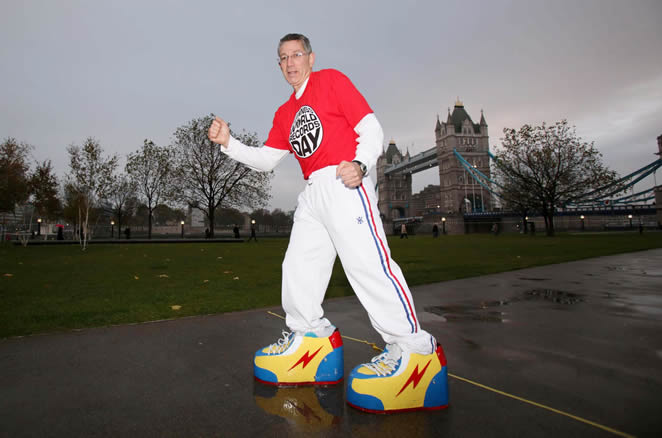
Sports Science Update: Barefoot Running Is More EfficientBy Matt FitzgeraldAs published byCompetitor GroupFor more articles on "natural running," please visit Competitor's Natural Running Category.
Running shoes—even the lightest ones—have weight. Weight is the enemy of running performance, because it increases the oxygen cost of running at any given pace. Therefore, one would assume that runners can run more economically without shoes than with them. A new study out of the University of Nebraska demonstrates that this is indeed the case.
Ten recreational runners were asked to run with and without shoes on a treadmill and overground (on an indoor track) while breathing into a mask connected to a machine that measured oxygen consumption. The researchers found that oxygen consumption was significantly greater at a fixed running pace both on the treadmill (2%) and overground (5.7%). Ratings of perceived effort were also significantly higher with shoes on. This is important, because how hard running feels is the ultimate determinant of how well runners perform. These findings therefore suggest that runners could record faster race times barefoot than shod.
This is actually not the first study to demonstrate that running without shoes is more economical than running with them. One past study even went a step further and showed that the higher energy cost of running in shoes is caused only in part by the weight of shoes. Changes in stride mechanics associated with wearing shoes also have an effect.
What do we do with this information? It’s difficult to say what can be done with it. Concluding that you should do your next race barefoot for the sake of a better performance would be a bit hasty. After all, your next race will probably take place on roads, and the runners in this study did not run on roads. The likely effect of running your next race on roads would be blisters and bruised heels, not a PR.
So then, why not gradually inure your feet to unshod running in training and then run your next race barefoot? That might not work either. I can all but guarantee that the runners involved in this study woke up with sore calves and Achilles tendons and possibly sore heels after running barefoot. Because running mechanics are very different without shoes, so are the stresses that the lower legs especially are subjected to. Consequently, to effectively adapt to barefoot running from shod running, you essentially have to start over. Whether you could eventually come out ahead for having started over and learned to run barefoot versus staying the course in shoes is uncertain.
It bears mentioning also that running in Vibrams is not running barefoot. Vibrams have as much weight as the lightest racing flats and they alter running mechanics. Research suggests there’s a binary difference between shod and unshod running. Even the thinnest soles change how we run. To take advantage of the economy boost associated with running barefoot, you have to run barefoot. That means bare skin on hot asphalt on summer days, bare skin on ice on winter days, etc. So again, if you consider the entire training context as relevant to racing performance, then you’re probably better off training and racing in the lightest shoes that are comfortable for you.
If your next race is on a golf course, however, my answer changes. In that case you should definitely take off your shoes. Without question, your best possible races performance would take place barefoot on a surface suitable for barefoot running. If nothing else, then, this new study suggests that, in order to continue the process of improving running world records, the sport may have to start hosting races on surfaces on which runners can comfortably run barefoot. Who knows? Perhaps the first sub-two-hour marathon will be run by a barefoot runner on a 26.2-mile long putting green.








